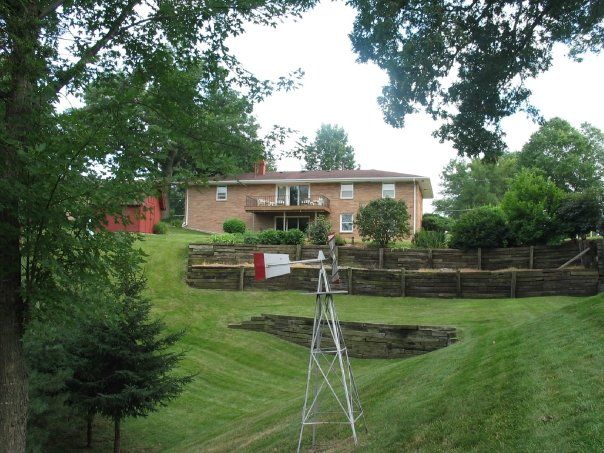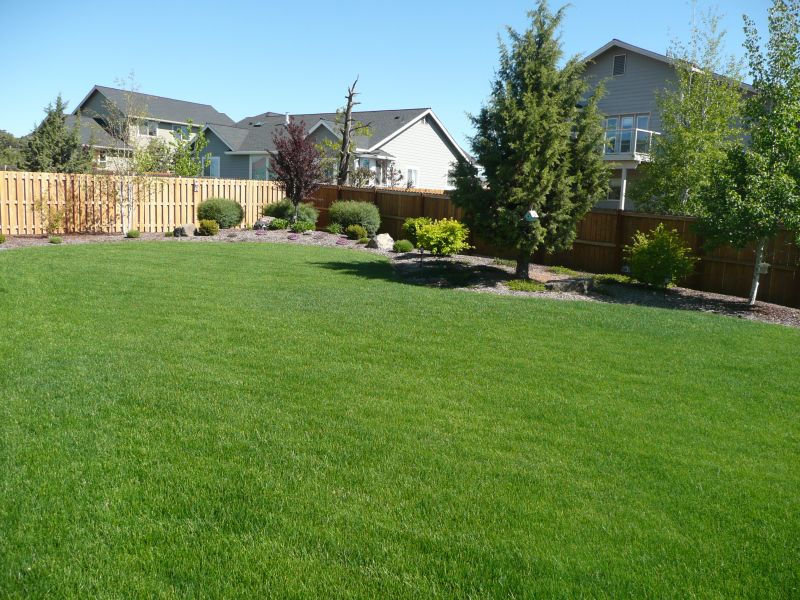Much stress is placed on our water systems during warm summer months. Many homeowners who water their lawns use as much as 80 percent more water during the summer than they do in cooler seasons. But the average homeowner often waters his lawn too frequently, too lightly and at the wrong time of day, wasting water and creating an unhealthy environment for their grass. Following a few sensible rules could help you conserve water while maintaining a healthy lawn.
The information here is directed toward established lawns. Newly laid sod will require a different, more frequent watering plan.
When to Water
- Avoid irrigation during midday and in windy conditions.
- The best time to water a lawn is from 5 to 8 a.m. During this time, water usage is lowest and water pressure is probably the highest.
- Wind is low in early morning, so the spray of water from the sprinkler system is less likely to disrupt the water pattern and with no hot sun, less water is lost to the atmosphere by evaporation.
- Also some turf diseases require extended periods of leaf moisture, so water early and the grass blades can dry out quickly as the sun rises.
- Water only when the plant tells you to. Look for bluish-purple leaves, rolled leaves, foot printing. Water within a day of observing these symptoms.
How much to Water
- Water lawns less frequently so that they develop deeper roots that enable them to better utilize soil water.
- If you water lightly, the water stays near the surface and roots do too, becoming very vulnerable during the next dry spell.
- When you water, apply from three-quarters to one inch of water. The water should soak deeply, encouraging roots to grow down deep. Measure one inch of water in a few empty canssuch as tuna cans or empty vegetable tinsand mark the one-inch level on the can with paint. Now, place them around your sprinklers and make a record of the time it takes to fill them to the one-inch mark with water. Youll then know how long to water to ensure a deep root-watering level.
- For established lawns you should water no more than once every week. The general rule is to water only when the grass blades turn color to gray-green and visible footprints are left in the turf after you walk on it. Water within a day after observing this.

Prepare your Lawn for the Summer
The following lawn-care tips will help reduce the need for irrigation and increase the chance of your lawn surviving summer drought.
- Avoid the temptation to irrigate in spring just to get grass growing. Allow it to green up naturally. Do not begin to irrigate until dry conditions of early summer cause turf wilt that lasts for more than one day.
- If in the spring the soil is allowed to dry slightly and the grass to wilt some, a deeper and more-hardy root system will develop. Such a root system will be necessary to reduce the need for summer irrigation and to survive drought conditions or city water restrictions.
- Mow frequently during the growing season and avoid scalping. Mow grass tall with a properly sharpened blade to produce a dense cover with a deep root system. Taller grass has a deeper root system that draws moisture from a larger volume of soil and results in less need for irrigation.
Read your lawn
The following are signs that lawns should be thoroughly watered if grasses are to remain green and actively growing:
- Grass blades turn bluish-purple, indicating plant wilt.
- Footprints remain in the lawn for several hours. Grass blades with plenty of water quickly return to their rigid upright shape, but those lacking water will show footprints longer.
- If high temperatures and dry conditions continue without rain or irrigation, the aboveground portion of grasses will turn entirely brown and die. Grasses are dormant during this browned-out stage. The lower portion of the plant usually remains alive but is not growing. Thorough watering will bring the lawn out of dormancy, and new growth will resume from the below-ground base of grass plants.
- Dormant lawns should receive at least 1 inch of water every two or three weeks during summer to prevent complete turf loss. Grasses may not then show a noticeable greening, but that amount of irrigation should be sufficient to hydrate the lower plant portions, which should recover once adequate moisture is available.
Turf Scalping
A lawn mowed at heights of 3 to 3-1/2 inches will have a better chance of surviving prolonged drought and water restrictions. Most homeowners mow lawns once a week regardless of the mowing height. But taller mowing heights are less likely to cause turf scalping, especially when grass leaves are rapidly growing in the spring. Dull mower blades and scalped turf result in an unattractive lawn that too many homeowners try to correct with over irrigation.
Summary
Good lawn care practices save water and result in hardy turf. The next time you think your yard needs water, think of Mother Nature. Does she water her plants two to three times a week? Have plants survived over the past millions of years without being watered by humans two to three times a week? Do not water during a week where Mother Nature has provided plenty of natural rainfall. If no rain, water deeply once a week.
